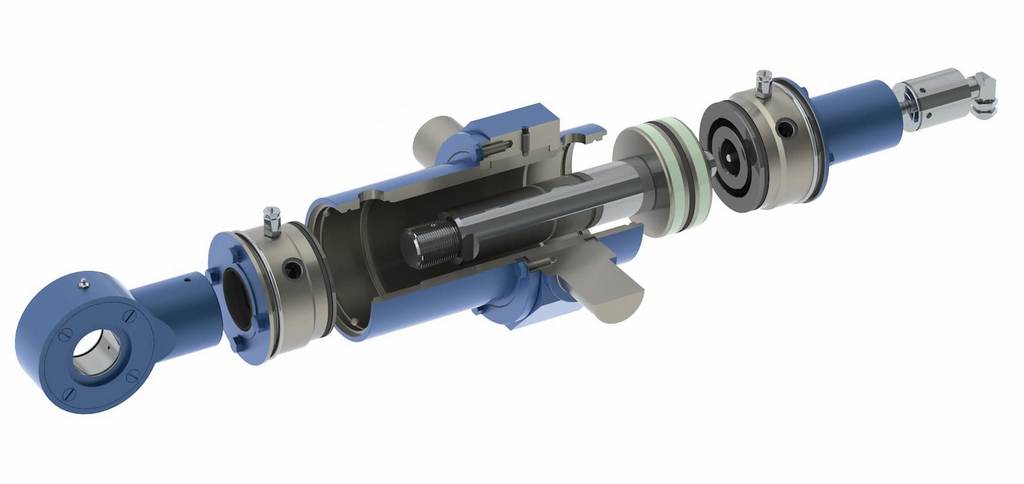Hydraulic cylinders play a crucial role in various industries, powering machinery and equipment with their efficient hydraulic force. However, like any mechanical component, hydraulic cylinders can sometimes generate noise during operation, which can be a cause for concern. In this article, we will explore the common causes of hydraulic cylinder noise, discuss the potential implications, and provide practical solutions for minimizing or eliminating the noises.
Table of Contents
- Introduction to Hydraulic Cylinder Noise
- Common Causes of Hydraulic Cylinder Noise
- Implications of Hydraulic Cylinder Noise
- Solutions for Minimizing Hydraulic Cylinder Noise
- Regular Maintenance and Inspection
- Conclusion
- Frequently Asked Questions (FAQs)
1. Introduction to Hydraulic Cylinder Noise
It refers to any unwanted sound generated during the operation of a hydraulic cylinder. This noise can vary in intensity, pitch, and duration, depending on the underlying cause. It is important to address hydraulic cylinder noise promptly to prevent further damage and maintain the overall efficiency of the hydraulic system.
2. Common Causes of Hydraulic Cylinder Noise
There are several factors that can contribute to hydraulic cylinder noises. Some of the common causes include:
a. Air in the Hydraulic System
Air bubbles trapped within the hydraulic fluid can create aeration and cause noises when they pass through the hydraulic cylinder.
b. Contamination
Contaminants such as dirt, debris, or metal particles in the hydraulic fluid can lead to increased friction and noises during cylinder operation.
c. Misalignment
Misalignment of the hydraulic cylinder components can result in uneven loading, causing vibration and noises.
d. Excessive Clearance
Excessive clearance between the piston and cylinder wall can lead to piston slap, resulting in noise during operation.
e. Cavitation
Cavitation occurs when the pressure within the hydraulic fluid drops, causing the formation and collapse of vapor bubbles. This can create noise and potentially damage the hydraulic components.
3. Implications of Hydraulic Cylinder Noise
Hydraulic cylinder noises can have various implications, including:
- Reduced operational efficiency: Excessive noise indicates inefficiencies within the hydraulic system, potentially leading to reduced performance and productivity.
- Increased wear and tear: Noisy hydraulic cylinders may experience increased friction and stress, accelerating component wear and reducing the lifespan of the cylinder.
- Safety concerns: Unusual or loud noises can be a sign of underlying issues that, if left unaddressed, can lead to system failure or accidents.
4. Solutions for Minimizing Hydraulic Cylinder Noise
To minimize or eliminate it, consider the following solutions:
a. Purging Air from the System
Properly bleeding and purging air from the hydraulic system can help reduce aeration and eliminate noise caused by air bubbles.
b. Fluid Maintenance
Regularly monitor and maintain the hydraulic fluid to prevent contamination. This includes filtering the fluid, replacing it when necessary, and keeping the hydraulic system clean.
c. Alignment and Tightening
Ensure proper alignment of the hydraulic cylinder components and tighten any loose connections to minimize vibration and noises.
d. Piston and Cylinder Inspection
Regularly inspect the piston and cylinder for excessive wear, damage, or misalignment. Replace any worn-out or damaged components to prevent noise and ensure smooth operation.
e. Pressure Control
Maintain the correct hydraulic pressure within the system to prevent cavitation and the associated noise. Install pressure relief valves or dampeners if needed.
5. Regular Maintenance and Inspection
To prevent it, establish a regular maintenance and inspection schedule. This includes routine checks of hydraulic fluid levels, pressure, and system integrity. Implementing a preventive maintenance program can help identify and address potential issues before they escalate into significant problems.
6. Conclusion
It can be an indication of underlying problems within the hydraulic system. By understanding the common causes and implementing appropriate solutions, such as purging air from the system, maintaining hydraulic fluid quality, ensuring proper alignment, and conducting regular inspections, you can minimize noise, improve operational efficiency, and extend the lifespan of your hydraulic cylinders. Remember, proactive maintenance and timely troubleshooting are key to keeping your hydraulic system running smoothly and quietly.
7. Frequently Asked Questions (FAQs)
Q1: Can hydraulic cylinder noise be an indication of a more serious problem?
A: Yes, It can signify underlying issues that may lead to system failure or reduced performance if left unaddressed. It is important to investigate and resolve the source of the noise promptly.
Q2: How often should hydraulic cylinders be inspected?
A: The frequency of hydraulic cylinder inspections depends on factors such as operating conditions, usage intensity, and manufacturer recommendations. However, a general guideline is to conduct visual inspections regularly and perform more comprehensive inspections as part of a preventive maintenance program.
Q3: Can I use additives to reduce hydraulic cylinder noise?
A: Additives are generally not recommended for noise reduction in hydraulic systems. It is best to address the root causes of the noise rather than relying on additives, which may have unintended effects on the system.
Q4: What should I do if I cannot identify or resolve the source of hydraulic cylinder noise?
A: If you are unable to identify or resolve the source of hydraulic cylinder noises, it is advisable to consult a qualified hydraulic specialist or technician who can provide expert guidance and assistance.
Q5: Can hydraulic cylinder noise be prevented entirely?
A: While it may not be possible to eliminate all hydraulic cylinder noise, implementing proper maintenance practices, addressing potential issues promptly, and following manufacturer guidelines can significantly reduce noises levels and ensure optimal hydraulic system performance.

